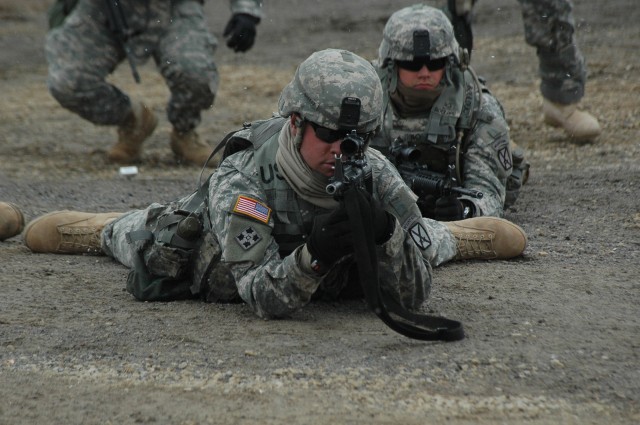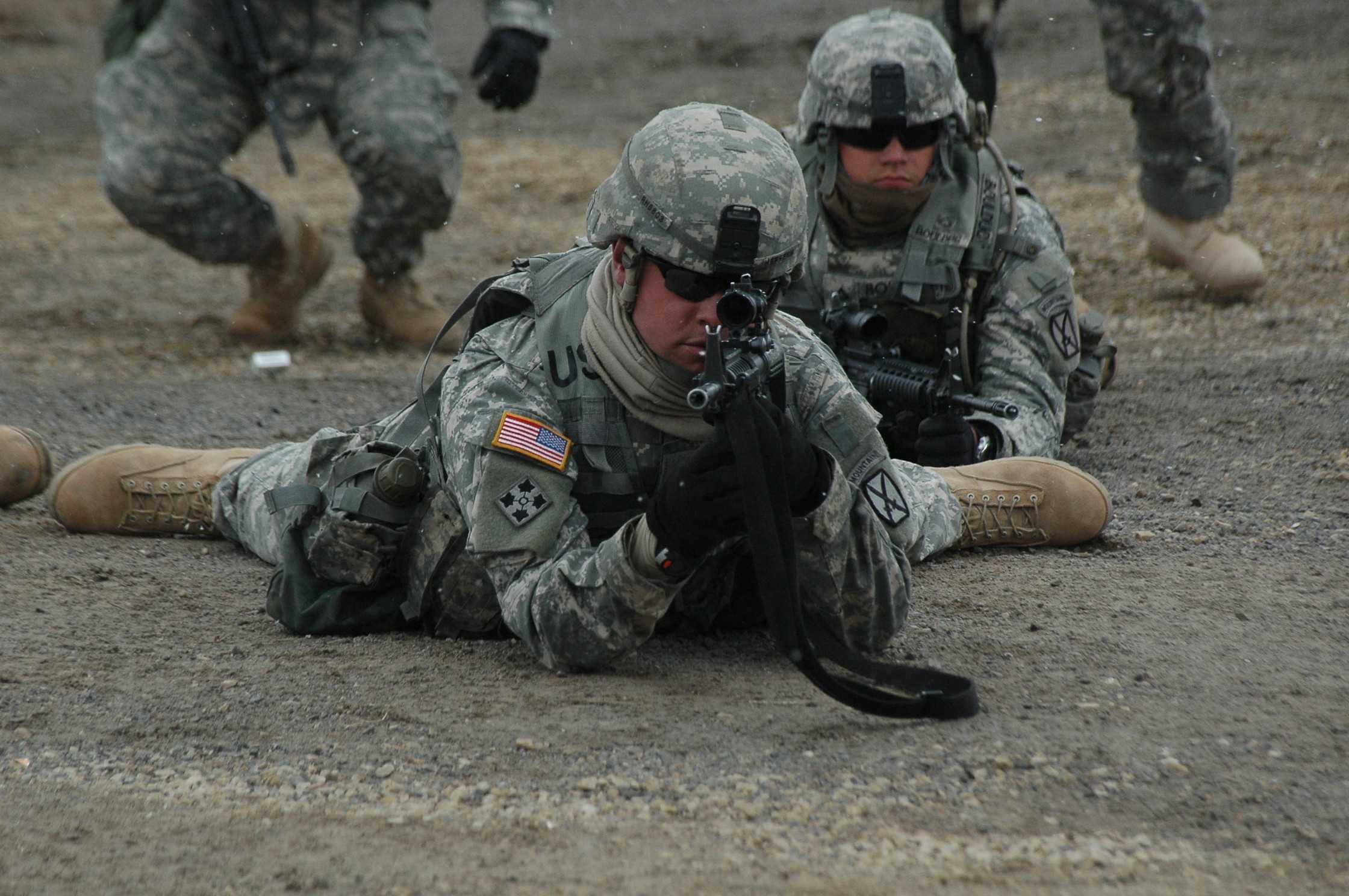CAMP WILLIAMS, Utah - Preparing for an upcoming deployment to Afghanistan, Soldiers from 5th Battalion, 25th Field Artillery Regiment, 4th Brigade Combat Team, 10th Mountain Division, conducted Infantry-tactics training here, Feb. 15-16.
The 5-25 FA Soldiers are in Utah to perform artillery tasks as part of Off-Post Training (OPT) exercises supporting the Patriot Brigade's 2nd Battalion, 4th Infantry Regiment. However, the 5-25 FA "Red Legs" took time to take Infantry tactics classes that they might actually be called upon to perform for real someday soon.
"We are trying to get Artillerymen up (to standard) on Infantry formations and tasks," said 1st Sgt. Travis Elliston, Company B, 2-4 IN first sergeant. "If they go on patrols (in Afghanistan), we want them to know how to patrol as Infantrymen."
Noncommissioned officers (NCOs) from Co. B taught all of the classes, and the first block of instruction included casualty collection point (CCP) procedures and nine-line Medical Evacuation (MEDEVAC) refresher training. The training was so effective even Soldiers with professional medical experience got something out of the informative class.
"This is a good building block," said Pfc. Terry Trinkella, a medic for 5-25 FA. "I learned how to utilize CCPs. They taught us how to set one up; it was a good class."
CCPs are arranged in a triangular shape. Patients go through a triage process and CCP personnel direct them, or take them, to the point of the triangle they are supposed to go - depending on their health status.
"I learned that green means routine, blue means priority and red means urgent," said Spc. Justin Pavlicek, 5-25 FA artillerymen. "Learning all of this will help us and the medics tremendously if called upon (in Afghanistan)."
After learning about CCPs, the artillery Soldiers received a class about hand signals and how to use them properly during troop movements. Some of the Soldiers showed surprise when they learned the number of hand signals Infantrymen use and how detailed they are.
"We use a couple of these all the time. We learned more, which was very useful," said Pfc. Loc Cao, fire direction control, Battery B, 5-25 FA. "We learned the hand wave to assemble but had to remember to point to where we were assembling at so they (Soldiers) don't assemble at the wrong point."
After gaining an understanding of basic hand signals and troop movements, the 5-25 FA Soldiers practiced their newly taught lessons in the snow. With snow accumulations up to knee high for some Soldiers and a change in altitudes from Fort Polk to Camp Williams, the troops focused on more than just hand signals.
"We're getting acclimated to the altitude; it is colder here than in Louisiana," said Pavlicek. "Being in the snow is good practice for Afghanistan, because we might be doing these movements in snow there as well."
The Artillerymen's Infantry training resumed the next day, so Soldiers could start fresh and build upon the lessons taught the previous day. With only two days to receive the training, the Soldiers made sure they got the most out of the training.
"When we go to Afghanistan, there's a good chance we will be attached to an Infantry unit," said Cao. "The more practice we get, we can turn it into muscle memory and know what to do."
Highlights on the second day of training included clearing Improvised Explosive Devices (IEDs); reporting Unexploded Ordnance (UXO); entering villages, towns, houses; and searching enemy personnel.
"It was good to learn how to clear an area if you suspect an IED," said Cao. "Then we were showed how to check for secondary IEDs while also pulling security and calling Explosive Ordinance Detachment (EOD). They (Co. B NCOs) did a great job explaining this to us."
The threat of IEDs makes searching enemy personnel that much more important to the security of all the Soldiers on patrol. Soldiers took this class very seriously.
"You take two guys, have one pull security and the other search the enemy," said Cao. "If (he's) alive, you secure him under control; if not, then search for types of detonators."
With two days of training complete, the Artillery Soldiers gained a better understanding of their Infantry brothers and share a similar mindset with them as they all move on from here.
"This is good training for both of us (5-25 FA and 2-4 IN) to be here," said Pavlicek. "It is good for the Infantry and Artillery to work together and trust each other more."


Social Sharing